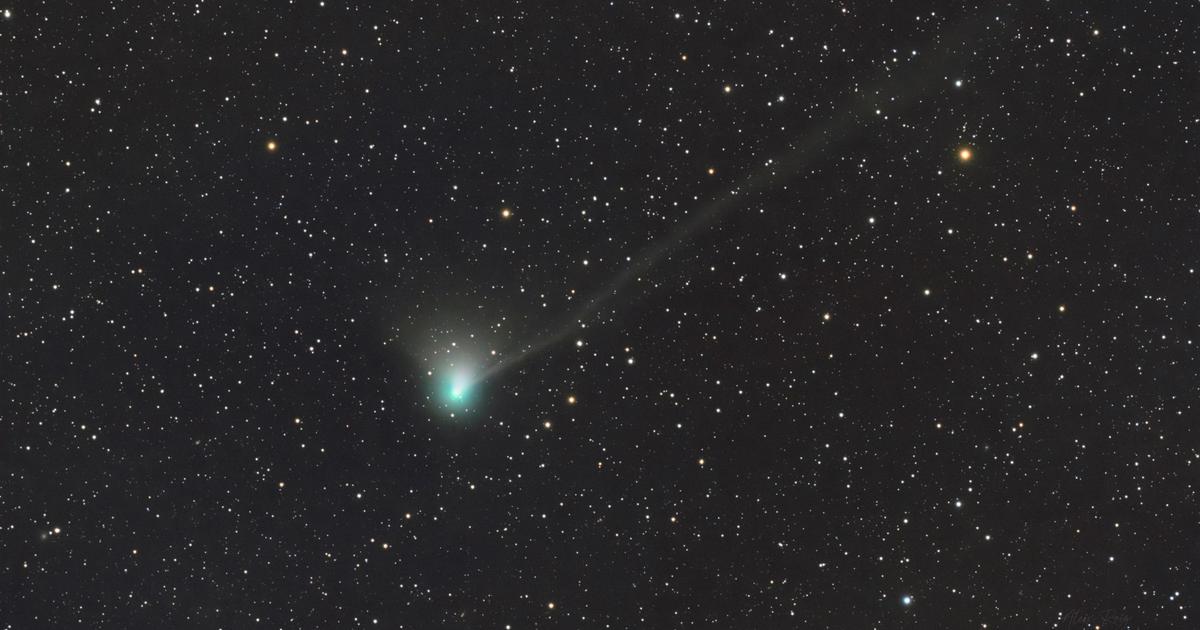It's an astronomical treat to start the year 2023: a comet could soon be visible with the naked eye, or at most with a simple pair of binoculars.
It will have the advantage of being located between the constellations of Ursa Minor and Ursa Major, which will make it relatively easy to locate.
If there is still one unknown about the extent of the spectacle, it is that comets are by nature rather unpredictable objects: they are small frozen bodies which vaporize as they pass near the Sun, giving rise to large structures. of several million or even hundreds of millions of kilometers, the cometary tails.
And predicting how these will evolve is never easy, because many parameters come into play. It's even more complicated when the comet is “new”.
In this case, this January comet was only discovered last March by the Zwicky Transient Facility (ZTF) systematic transient object survey program, using the Samuel-Oschin Telescope at the Palomar Observatory in California. .
The comet is called C/2022 E3 (ZTF).
The comet is 10,000 times brighter today than when it was discovered
Nicolas Biver, astronomer at the Paris Observatory
Its orbit suggests that it comes to us from quite a distance and that it has already made at least one pass near the Sun… 50,000 years ago.
In those remote times, Neanderthal man still lived in Europe.
The story does not say if the comet was then bright enough to light up its sky.
At the moment, the development of hair and cometary tails continues apace.
“The comet is 10,000 times brighter today than when it was discovered
,” explains Nicolas Biver, astronomer at the Paris Observatory and specialist in these objects.
“It is a relatively active object which will pass closest to the Sun on January 12.
It will then be four times closer to the Sun than the Earth.
According to projections, this could make it visible to the naked eye.
This may be limited, but we are not immune to a good surprise.
Close to the Pole Star
The spectacle, however, should not be as impressive as for Comet Neowise in 2020, so bright that it was then visible to the naked eye in the early morning.
C/2022 E3 (ZTF) will be intrinsically less luminous but it will have the advantage of passing close to the North Star, and thus of being visible for a large part of the night.
"If the comet passes closest to the Sun in eight days, it will then approach the Earth until the beginning of February
," adds Nicolas Biver.
Ideally, it will be better to take advantage of a night with little or no moon to have a chance of spotting it.
The weekend of January 21 to 22 offers a priori the most favorable window.
For the most cautious, the most unlucky or the least equipped, many amateur astronomers already manage to take splendid shots of the comet.
And scientists are not left out: many professional observation programs have their eyes on the frozen ball.
Their purpose, however, is more descriptive than aesthetic.
They will seek to determine the presence and abundance of different molecules in the gigantic plume of gas: CO2, CO, but also methane, methanol and perhaps ethane, ethanol, or even molecules that are a little longer and more complex.
To detect them, astronomers have a powerful new tool: the new monumental James Webb telescope, part of whose time has been devoted to observing the comet.





